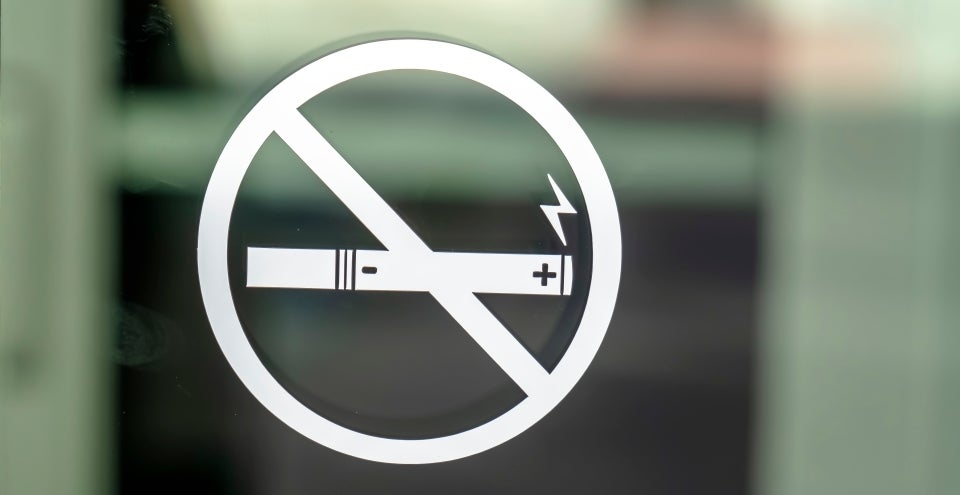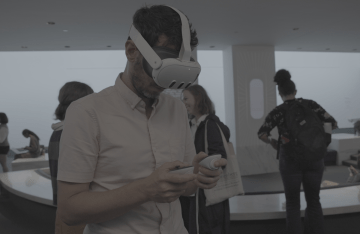Research in Brief: Which Anti-Vaping Messages Work for LGBTQ+ Youth?
To understand how to reduce vaping among LGBTQ+ youth, Annenberg researchers spoke to young Americans about anti-vaping messages on social media.

Approximately 2.6 million American teenagers identify as lesbian, gay, bisexual, transgender, or queer. These youth are at significantly higher risk for using tobacco and nicotine vaping products than their heterosexual peers, but there aren’t many anti-vaping campaigns designed specifically for them.
As part of Project SMART, a study to test the effectiveness of a tailored social media intervention to prevent vaping initiation among LGBTQ+ youth, health communication researchers at the Annenberg School for Communication and colleagues recently published a paper detailing LGBTQ+ youth's thoughts on social media anti-vaping messages in the journal Scientific Reports.
Here’s a quick summary of their findings, written by the researchers, which include Professors Andy Tan and David Lydon-Staley as well as doctoral candidate Kate Okker-Edging, Penn Medicine Professor Andrew Strasser, and Health Communication & Equity Lab Research Project Manager Elaine Hanby.
What is the problem being addressed?
Sexual and gender minority (SGM) youth are more likely to vape, but there aren’t many anti-vaping campaigns designed specifically for them. This means that SGM youth may have access to fewer resources that could prevent them from vaping. To help fill this gap, we asked SGM youth about the types of anti-vaping messages that they would pay attention to and connect with if they saw them on social media.
How was the study conducted?
This study surveyed 245 SGM youth in the U.S., ages 13 to 18, and showed them different types of images that could be used in an anti-vaping social media campaign. The images varied in two ways: (1) how much the images reflected SGM identities (none, a little, or a lot) and (2) how many people were shown in the image (one person, two people, or 3 or more people). SGM identities were reflected through gender-diverse representation in the images, and by using rainbow and Pride imagery.
We developed images for every combination of SGM identity representation and number of people (e.g., no SGM identity representation, one person; a little SGM identity representation; two people, etc.). We used a discrete choice experiment to help us understand which combinations of SGM identity and number of people were most positively viewed by SGM youth. A discrete choice experiment is a method that allows us to identify which combinations were most appealing, compared to other combinations. We asked participants which images they liked the most, which images they liked the least, which images were most likely to grab their attention, and which images they were most likely to repost or share.
What did we learn from this study?
Overall, youth cared more about whether the images reflected SGM identity than how many people were shown. They liked images that strongly reflected SGM identities the most, and images with no reflection of SGM identity the least. The top choices were images with two people and high SGM representation, which may have looked like SGM couples, or larger groups (3+) with some or no SGM representation. The least popular were group images with high representation—possibly because they felt less relatable or more staged.
Why is this study important?
These findings suggest that when anti-vaping messages reflect the identities of SGM youth, they may be more likely to grab their attention, feel relevant, and get shared with friends. This can help make anti-vaping campaigns more effective for this high-risk group.
"Discrete Choice Experiment To Evaluate Preferences for Tailored Social Media Messages for Vaping Initiation Prevention Among Sexual and Gender Minority Youth" was published in Scientifc Reports and authored by Kathryn Pluta (University of Florida Health), Andy Tan (Annenberg), Elaine Hanby (Annenberg), Jennifer H. LeLaurin (University of Florida Health), Sixiao Liu (University of Central Florida), Sabra L. Katz-Wise (Harvard University), Jenine Pilla (Annenberg), David M. Lydon-Staley (Annenberg), Brittany Charlton (Harvard University), Wasim Maziak (University of Florida Health), Jennifer Potter (Harvard University), Andrew Strasser (Penn Medicine), Bob Gordon (California LGBT Tobacco Education Partnership), Ryan P. Theis (University of Florida Health), Kate Okker-Edging (Annenberg), Ramzi Salloum (University of Florida Health)



